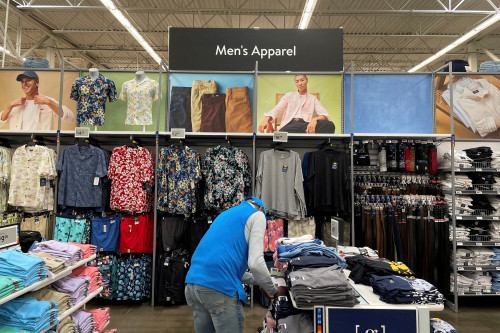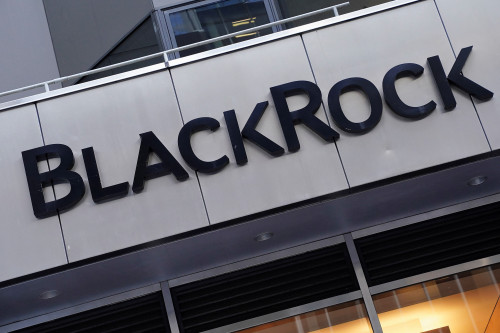
By Lucia Mutikani
WASHINGTON (Reuters) -U.S. consumer prices increased marginally in July, though rising costs for services such as airline fares and some tariff-sensitive goods like household furniture caused a measure of underlying inflation to post its largest gain in six months.
The mixed report from the Labor Department’s Bureau of Labor Statistics on Tuesday also suggested the disinflationary trend in services was stalling, with a record surge in the cost of dental services and strong increase in healthcare prices. While the pass-through from President Donald Trump’s sweeping import duties to goods prices has so far been limited, economists continued to believe higher inflation was around the corner.
Given that the Federal Reserve places more emphasis on services inflation, some observers cautioned that an interest rate cut at the U.S. central bank’s September 16-17 policy meeting was not a done deal despite signs of deteriorating labor market conditions. Much will depend on the employment and inflation reports for August.
“For those at the Fed who want to watch and wait, there is plenty here for them to make the case,” said Conrad DeQuadros, senior economic advisor at Brean Capital.
“For those who want to cut, they will argue tariffs are a one-time effect, the pass-through is modest and they want to cut because of risks to the labor market. This report, therefore, clinches nothing either way.”
The Consumer Price Index rose 0.2% last month after a gain of 0.3% in June, in line with economists’ expectations.
While financial markets breathed a sigh of relief on the data, concerns are mounting over the quality of the government’s inflation and employment reports following budget and staffing cuts that have resulted in the suspension of data collection for portions of the CPI basket in some areas across the country.
Those worries were amplified by the firing of Erika McEntarfer, the head of the BLS, early this month after data showed stall-speed job growth in July.
Trump on Monday nominated Heritage Foundation economist E.J. Antoni, a critic of the BLS, to head the statistics agency, causing apprehension among some economists. Antoni was a contributor to “Project 2025,” the controversial conservative plan to overhaul the federal government.
The president seized on the tame headline CPI number to bolster his long-held view that consumers would not pay for tariffs, and singled out economists at Goldman Sachs for what he said were bad predictions on the tariff impact.
“Tariffs have not caused Inflation, or any other problems for Country,” Trump posted on his Truth Social media platform.
The moderation in the CPI reflected a 2.2% decline in gasoline prices. Food prices were unchanged after rising 0.3% for two straight months. Grocery store food prices fell 0.1% as a 3.9% drop in the cost of eggs more than offset a 1.5% increase in beef prices and a 1.9% rise in the cost of milk.
Droughts in past years reduced cattle herds and raised the cost of feed, leading to higher beef prices.
In the 12 months through July, the CPI advanced 2.7%, matching the rise in June.
WARMER CORE INFLATION
Excluding volatile food and energy components, the CPI rose 0.3%, the biggest gain since January, after climbing 0.2% in June. The so-called core CPI was lifted by higher prices for services, including a 4.0% rebound in airline fares. Healthcare costs increased 0.7%, the largest rise since September 2022, amid solid rises in hospital and related services.
Prices for dental services surged by a record 2.6%. Motor vehicle maintenance and repair costs soared as did the cost of financial services. Overall services prices rose 0.3% for a second straight month.
Tariffs continued to drive up the cost of household furnishings and supplies, which rose 0.7%, while footwear prices surged 1.4%, the biggest increase since April 2021. Motor vehicle parts and equipment prices vaulted 0.9%, driven by a 1.0% increase in the cost of tires.
But prices for appliances fell after two months of hefty increases, while apparel barely rose and prescription medication was cheaper. Core goods prices increased by a mild 0.2%, which some economists said suggested softening demand was curtailing businesses’ ability to pass on higher costs from tariffs to consumers. Others disagreed, pointing out the on-again, off-again manner in which some duties have been implemented.
“Some businesses are probably holding off on price increases while they wait to see where tariff rates settle out,” said Bill Adams, chief economist at Comerica Bank. “But nobody goes into business to lose money, and companies will eventually pass on price increases one way or another.”
The core CPI increased 3.1% on a year-over-year basis in July after an advance of 2.9% in June.
Based on the CPI data, economists estimated the core Personal Consumption Expenditures Price Index rose 0.3% in July, matching the gain in June. That would raise the year-on-year increase to 3.0% from 2.8% in June. Core PCE inflation is one of the measures tracked by the Fed for its 2% target.
The U.S. central bank left its benchmark overnight interest rate in the 4.25%-4.50% range last month for the fifth straight time since December.
Stocks on Wall Street were trading higher on Tuesday. The dollar slipped against a basket of currencies. Yields on longer-dated U.S. Treasuries rose.
The BLS has suspended data collection after years of what economists described as the underfunding of the agency under both Republican and Democratic administrations. The situation has been exacerbated by the Trump administration’s unprecedented campaign to reshape the government through deep spending cuts and mass layoffs of public workers.
Citing the need to “align survey workload with resource levels,” the BLS suspended CPI data collection completely in one city in Nebraska, Utah and New York. It has also suspended collection on 15% of the sample in the other 72 areas, on average. That has led the BLS to use imputations to fill in the missing information.
The share of different cell imputation in the CPI data has jumped to 32% from only 10% in July 2024. Different cell imputation, which the BLS uses when all prices are unavailable in the home cell, maintains the item category but expands geography. The home cell method, considered by economists as higher quality, uses the average price of the same item in the same location as the missing product’s price.
Economists said they would be closely watching the data for increased volatility from these measures and any shifts in the trend when the new commissioner assumes his duties.
“It will be interesting to see whether the data continues to follow the trajectory we anticipate, given the well-known impact of tariffs,” said Elizabeth Renter, senior economist at NerdWallet. “One of many problems this changing of the guard introduces, increased skepticism about data quality. It may become difficult to determine whether any changes in the data are reflections of actual improvements.”
(Reporting by Lucia Mutikani; Editing by Andrea Ricci, Chizu Nomiyama and Paul Simao)





